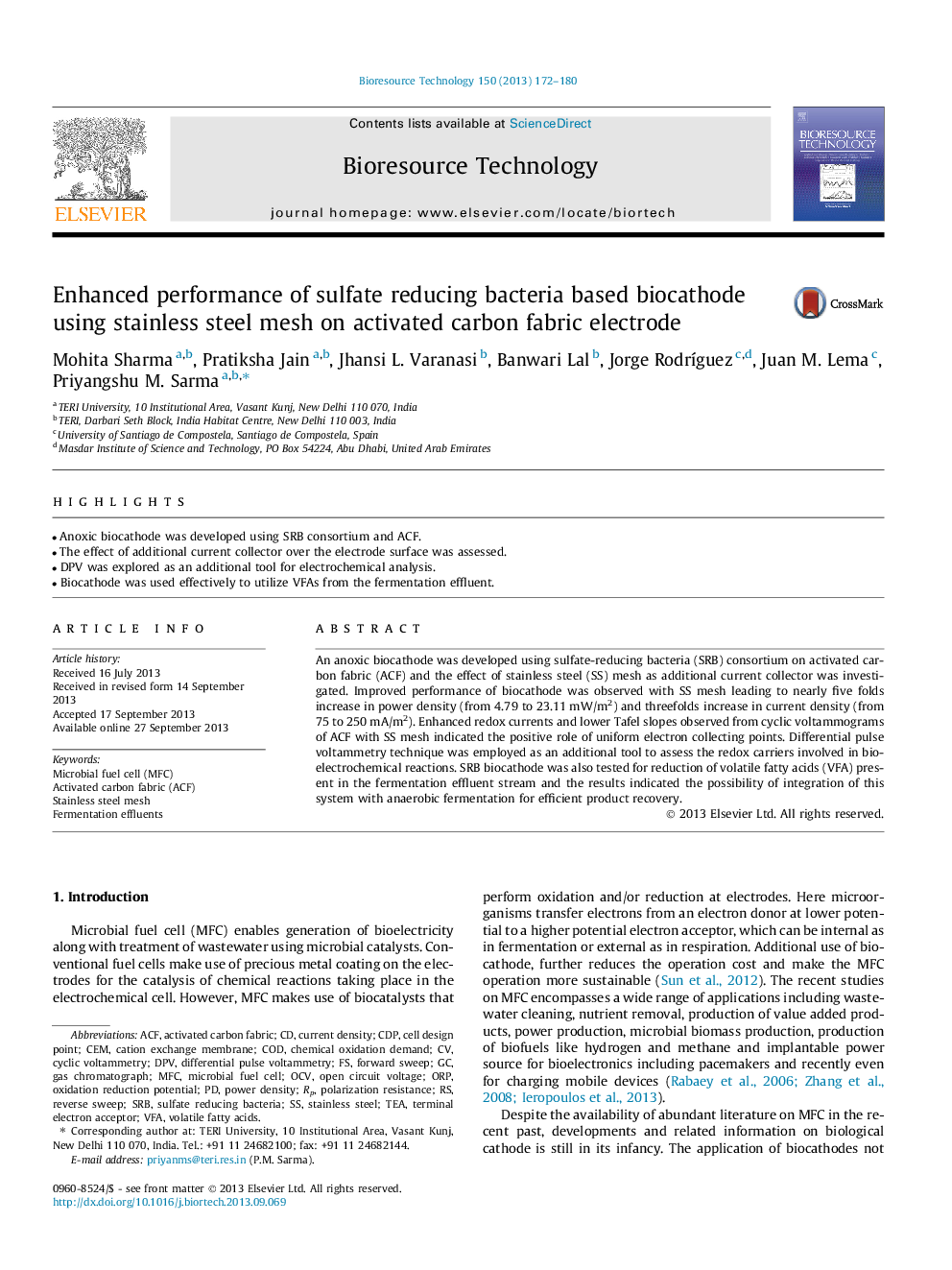| Article ID | Journal | Published Year | Pages | File Type |
|---|---|---|---|---|
| 7079246 | Bioresource Technology | 2013 | 9 Pages |
Abstract
An anoxic biocathode was developed using sulfate-reducing bacteria (SRB) consortium on activated carbon fabric (ACF) and the effect of stainless steel (SS) mesh as additional current collector was investigated. Improved performance of biocathode was observed with SS mesh leading to nearly five folds increase in power density (from 4.79 to 23.11Â mW/m2) and threefolds increase in current density (from 75 to 250Â mA/m2). Enhanced redox currents and lower Tafel slopes observed from cyclic voltammograms of ACF with SS mesh indicated the positive role of uniform electron collecting points. Differential pulse voltammetry technique was employed as an additional tool to assess the redox carriers involved in bioelectrochemical reactions. SRB biocathode was also tested for reduction of volatile fatty acids (VFA) present in the fermentation effluent stream and the results indicated the possibility of integration of this system with anaerobic fermentation for efficient product recovery.
Keywords
CEMActivated carbon fabricOCVACFCDPORPSRBMFCVFADPVVolatile fatty acidspower densityMicrobial fuel cellMicrobial fuel cell (MFC)Sulfate reducing bacteriacation exchange membraneStainless steelStainless steel meshPolarization resistanceDifferential pulse voltammetryCyclic voltammetryopen circuit voltageOxidation reduction potentialTEAcurrent densityCodgas chromatographTerminal electron acceptor
Related Topics
Physical Sciences and Engineering
Chemical Engineering
Process Chemistry and Technology
Authors
Mohita Sharma, Pratiksha Jain, Jhansi L. Varanasi, Banwari Lal, Jorge RodrÃguez, Juan M. Lema, Priyangshu M. Sarma,
